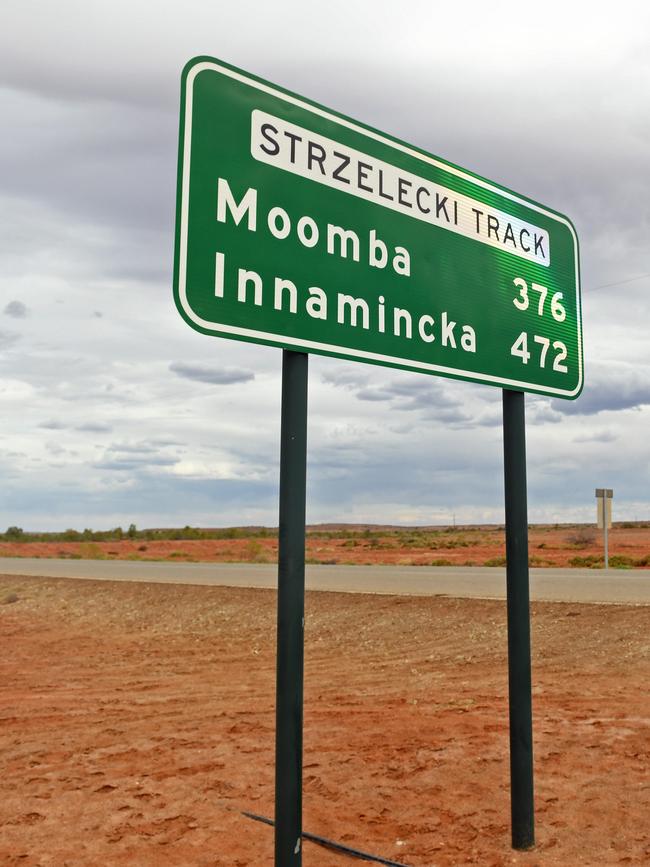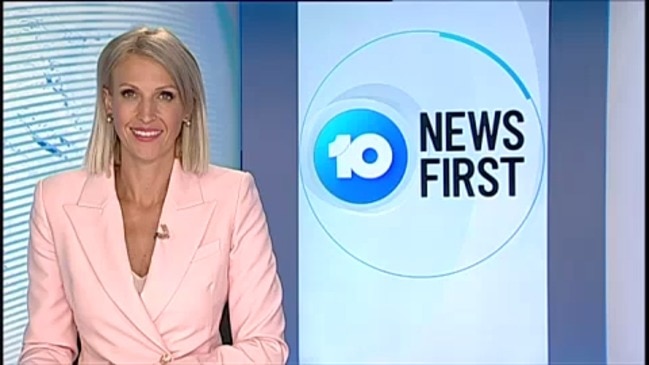SA Government seeking assessment of economic benefit of sealing the Strzelecki Track at a cost of $450m
The State Government looks set to have another swing at sealing the iconic Strzelecki track, with a call out to measure the economic impact of the $450 million project.

SA Business
Don't miss out on the headlines from SA Business. Followed categories will be added to My News.
- Business asked to chip in for vital outback link
- Labor commits to part-funding the Strzelecki upgrade
The State Government looks set to have another swing at sealing the iconic Strzelecki track, with a call out to measure the economic impact of the $450 million project.
Coincidentally the vital outback route is currently closed to all vehicles due to heavy rain at Innamincka, severing a vital transport link for the oil and gas, beef, and tourism sectors.
The former Labor State Government submitted a plan to seal and upgrade the 426km of the Strzelecki Track between Lyndhurst and Innamincka in 2014, but it was knocked back by federal funding body Infrastructure Australia because the proposal was assessed as “early stage’’.
The State Labor Party committed $90 million to sealing the Track before last year’s state election and the now Liberal Government said it would assess the proposal through its new body Infrastructure South Australia.

So far insufficient work has been done to justify Infrastructure Australia suggesting it should be backed with federal funding.
The national infrastructure body said in 2015-16 the Track was a “key freight route’’ and “Evidence suggests the Strzelecki Track upgrade will play a key role in supporting the petroleum, freight and agricultural industries in South Australia’’.
But it also said the State Government’s 2014 submission needed more work.
“To facilitate progression to more advanced stages the proponent should provide independently
verified capital cost estimates and further explore a private sector contribution to the project and alternative funding arrangements,’’ IA said in its assessment.

The Strzelecki Track has its roots in a major cattle theft, when Harry Redford drove a mob of stolen cattle from Queensland through the Channel Country, following the Cooper and Strzelecki watercourses to Marree.
It is now used by heavy vehicles supplying the beef industry and the Moomba gas plant and Cooper Basin oil and gas fields, and is a popular route for intrepid tourists.
But Department of Planning, Transport and Infrastructure figures indicate that heavy vehicles currently average just 35km/h on the Track, making for a journey of 14.2 hours one-way.
Sealing the road would boost this to 90km/h and wipe more than eight hours from the trip.
DPTI also said the road was closed for about 45 days per year, which would drop to 20 if it were sealed.
The DPTI tender, which closes on May 9, wants proponents to produce an updated economic impact report within three months, setting out how sealing the Track would boost the economy
“A single consolidated report, and associated evidence, is required detailing the wider economic benefits, which may be attached to submissions for funding at State and Federal Government levels (including Infrastructure SA and Infrastructure Australia),’’ the tender says.
A spokesman for Transport and Infrastructure Minister Stephan Knoll did not directly answer a question about whether the government would pitch for federal funding using the new report, but said the report “would form the basis of any future bid’’.
“The Marshall Government is exploring the economic benefit to South Australia from sealing the Strzelecki Track,’’ Mr Knoll said in a statement.
“The report earlier last year provided a foundation but more detailed work needs to be done, and that’s what we’re undertaking.”

A previous report was published last year by the Outback Communities Authority and Regional Development Australia — Far North, but that report only estimated the economic impact on tourism, and said the impact on other industries was not possible to accurately forecast.
Overall it estimated that the benefit to the economy would be $165 million per year, after a decade.
SA Chamber of Mines and Energy chief executive Rebecca Knol said the move was welcomed.
“The current condition of the road poses safety risks and ongoing operational costs to companies in the region and disadvantages SA based service companies. Previous economic modelling was undertaken in 2014 and a public, private, partnership (PPP) proposed.
“Infrastructure is fundamental to the everyday operation of the resources sector. Continual poor maintenance of regional roads puts at risk the $4B of export revenue that the resources sector provides to the state. Regional road issues and their prioritisation require strategic long term holistic planning.’’
PROJECT ELEMENTS
— A new two lane road (3.5m lane width) with 1.0m sealed shoulders, constructed mainly on the existing alignment; and
— Targeted floodway works along the road and a major bridge structure over the Strzelecki Creek.



